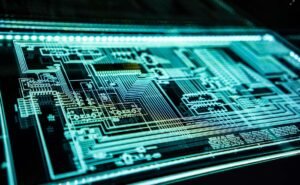Why AI Is the Most Dangerous Thing
Artificial Intelligence (AI) has made significant advancements in recent years, revolutionizing various industries. While AI offers great potential in terms of efficiency and convenience, it also poses several risks and dangers that need to be carefully considered. Understanding the potential downsides of AI is crucial in order to ensure its responsible development and deployment.
Key Takeaways:
- AI brings numerous benefits but also presents inherent risks.
- Ensuring the responsible development and deployment of AI is crucial.
- Ethical considerations and collaboration across industries are essential in managing AI risks.
One of the primary concerns regarding AI is its potential to outperform humans in almost all tasks, including those that require cognitive and decision-making abilities. **This has raised concerns about job displacement and economic inequality**. As AI continues to advance, it is important to address these issues by redefining educational systems and promoting lifelong learning to enable individuals to adapt to the changing job market.
Another significant danger associated with AI is its potential for misuse, especially in the form of malicious attacks and cyber threats. AI technologies can be exploited to create more sophisticated and targeted attacks, increasing the scale and impact of cybersecurity breaches. *Ensuring robust cybersecurity measures are in place is crucial to mitigate these risks*.
As AI systems become increasingly complex, there is also a growing concern about the ability to fully understand and explain their decision-making processes. This lack of transparency raises important ethical considerations, especially in high-stakes domains such as healthcare and autonomous vehicles. Establishing ethical guidelines and regulations that promote transparency and accountability is vital to prevent potential harm caused by opaque AI systems.
| Risks | Mitigation Strategies |
|---|---|
| Job displacement and economic inequality | Invest in education and lifelong learning programs |
| Cyber threats and malicious attacks | Implement robust cybersecurity measures |
| Lack of transparency and ethical concerns | Establish guidelines and regulations promoting transparency and accountability |
Additionally, the potential for AI to be biased or discriminatory is an ongoing concern. If AI systems are trained on biased data or reflect societal biases, they may perpetuate discriminatory practices. *Ensuring diverse and inclusive data sets and subjecting AI systems to rigorous testing can help mitigate bias*.
| AI Bias | Mitigation Strategies |
|---|---|
| Gender or racial bias in facial recognition systems | Train AI systems on diverse data and establish accuracy thresholds for different demographic groups |
| Bias in predictive models used for criminal justice | Regularly audit and update training data to minimize bias and align with fairness standards |
Moreover, AI also has the potential to exacerbate existing societal challenges, such as privacy invasion and social manipulation. *Stricter regulations and responsible data handling practices can help safeguard privacy, while increased awareness and media literacy are crucial to combat social manipulation*.
It is important for various stakeholders, including policymakers, researchers, and industry experts, to collaborate in addressing the risks associated with AI. By prioritizing transparency, ethical considerations, and responsible practices, we can harness the immense potential of AI while minimizing the dangers it presents.
| Stakeholders | Roles |
|---|---|
| Policymakers | Establish regulations and guidelines for AI development and deployment |
| Researchers | Investigate and identify potential risks, develop ethical frameworks |
| Industry experts | Ensure responsible AI development, promote collaboration and sharing of best practices |
In conclusion, while AI offers immense potential, it is crucial to carefully consider the associated risks and take proactive measures to ensure responsible and ethical development. By addressing concerns related to job displacement, cybersecurity, transparency, bias, and societal challenges, we can maximize the benefits of AI while minimizing its potential dangers.

Common Misconceptions
Misconception 1: AI will take over the world
One common misconception about AI is that it will eventually surpass human intelligence and take control over the world. However, this is far from the truth. AI systems are designed to assist humans, not replace them entirely.
- AI technology is created by humans and can only operate within the limits set by its creators.
- AI lacks consciousness or self-awareness, making it incapable of having motives or desires.
- The goal of AI development is to enhance human capabilities and solve complex problems, not to dominate humanity.
Misconception 2: AI will replace human jobs
Another misconception is that AI will lead to massive unemployment by replacing human workers with machines. While AI may automate certain tasks, it also creates new opportunities and jobs in the process.
- AI can handle repetitive and mundane tasks, freeing up human workers to focus on more creative and complex work.
- AI creates new job roles, such as AI trainers, ethical AI specialists, and AI system maintainers.
- Historically, technological advancements have led to the creation of new industries and job opportunities rather than widespread unemployment.
Misconception 3: AI is infallible and error-free
Many people believe that AI is perfect and free from making mistakes. However, AI systems are not infallible and can produce errors just like any other technology.
- AI systems are trained using data, and if the data is biased or incomplete, the AI can make biased or inaccurate predictions.
- AI is susceptible to adversarial attacks, where malicious actors exploit vulnerabilities in the system to deceive or manipulate it.
- AI systems must be continuously monitored and updated to ensure their accuracy and reliability.
Misconception 4: AI will eliminate the need for human creativity
Some believe that AI’s ability to generate realistic artwork, music, or writing will render human creativity obsolete. However, AI’s role is to augment and enhance human creativity, not replace it.
- AI can be used as a powerful creative tool, assisting artists, musicians, and writers in their creative processes.
- Human creativity involves emotional intelligence, critical thinking, and cultural context, which AI lacks.
- AI-generated content is often based on existing patterns, while human creativity thrives on breaking boundaries and exploring the unknown.
Misconception 5: AI is apathetic and lacks ethical considerations
Many believe that AI is devoid of ethical considerations and acts in an apathetic manner without understanding the implications of its actions. However, ethical AI development and deployment are crucial aspects of the field.
- AI developers are increasingly focusing on integrating ethical considerations into AI systems to ensure fairness, transparency, and accountability.
- AI is programmed to adhere to ethical guidelines and regulations set by humans.
- The responsibility for the actions and decisions made by AI ultimately lies with its human operators and developers.

Why AI Is the Most Dangerous Thing
Artificial Intelligence (AI) has become an integral part of our lives, with its applications ranging from virtual assistants to self-driving cars. While AI brings numerous benefits, there are growing concerns about its potential dangers and unintended consequences. In this article, we explore ten compelling reasons why AI is considered the most dangerous thing in our modern world.
1. Rise of Killer Robots
Advancements in AI have paved the way for the development of autonomous weapon systems, commonly known as killer robots. These machines have the potential to carry out lethal actions without human control, raising ethical concerns about the loss of human decision-making in matters of life and death.
2. Amplified Cybersecurity Risks
AI-enabled cyberattacks pose a significant threat to businesses, governments, and individuals. Hackers can use AI algorithms to exploit vulnerabilities, launch sophisticated attacks, and bypass traditional security measures. The speed and scale at which AI can execute attacks make it a potent weapon in the hands of malicious actors.
3. Job Displacement and Economic Inequality
The widespread adoption of AI technology is expected to automate various jobs, leading to significant job displacement. Workers in fields such as manufacturing, transportation, and customer service may find themselves replaced by AI systems, exacerbating economic inequality and social unrest.
4. Biased Decision-Making
AI algorithms are only as good as the data they are trained on. If the data used for training contain biases or reflect societal prejudices, AI systems can perpetuate and amplify these biases. This can lead to unfair and discriminatory decision-making, particularly in areas such as recruitment, law enforcement, and lending.
5. Privacy Invasion
AI systems rely heavily on collecting and analyzing vast amounts of personal data. This raises significant privacy concerns as it becomes easier for companies and governments to monitor and track individuals’ activities without their knowledge or consent. The potential for misuse of this data can have severe consequences for personal freedoms and civil liberties.
6. Loss of Human Control
As AI becomes more advanced and capable, there is a looming risk of losing control over these systems. Superintelligent AI could surpass human intelligence and act autonomously, making decisions that are beyond our understanding or ability to influence. This lack of control raises concerns about the unintended consequences and unpredictable behavior of AI systems.
7. Fake Content and Deepfakes
AI technology can generate highly realistic fake content, including images, videos, and audio recordings. This creates a significant challenge for the detection and verification of authentic information. Deepfakes, in particular, can be used to manipulate public opinion, spread misinformation, and potentially undermine trust in institutions.
8. Ethical Dilemmas in Autonomous Vehicles
Self-driving cars powered by AI bring potential benefits such as improved road safety and reduced traffic congestion. However, ethical dilemmas arise when programming these vehicles to make split-second decisions that prioritize the safety of passengers over pedestrians or vice versa. Striking the right balance between human life and minimizing harm poses ethical challenges.
9. Weaponization by Rogue States
AI’s rapid development and accessibility present a unique threat: the weaponization of AI by rogue states or non-state actors. The use of AI in developing advanced weapon systems, conducting cyber warfare, or manipulating information can disrupt global stability and security.
10. Dependency and Infrastructure Vulnerabilities
As our reliance on AI technology increases, so does our vulnerability to its failure. Critical infrastructure, such as power grids and communication networks, are susceptible to AI-driven attacks or system failures. A single point of failure in AI systems can have far-reaching consequences, impacting essential services and disrupting societies.
Conclusion
While AI offers immense potential for positive change, it also comes with significant risks and challenges. The dangers outlined in this article highlight the urgent need for responsible development, regulation, and ethical consideration of AI applications. By addressing these concerns head-on, we can harness the benefits of AI while mitigating the potential harm. Safeguarding against the dangerous aspects of AI should be a global priority to ensure a secure and prosperous future for humanity.
Frequently Asked Questions
What are the potential dangers of AI?
Artificial Intelligence (AI) poses various potential dangers, including job displacement, privacy concerns, and the risk of misuse for malicious purposes.
Can AI surpass human intelligence?
Although AI has made significant advancements, it has not yet surpassed human intelligence. However, scientists and researchers are actively working on developing more sophisticated AI models.
What is the risk of AI systems being biased?
AI systems can be biased if they are trained on biased datasets or if the algorithms used to develop them have inherent biases. This can lead to unfair and discriminatory decision-making.
Are there any ethical concerns associated with AI?
Yes, ethical concerns exist regarding AI. Issues include the development of autonomous weapons, invasion of privacy, potential job losses, and AI’s impact on social dynamics.
Can AI take control over human decision-making?
No, AI cannot take full control over human decision-making. AI is designed to assist and augment human decision-making processes, not replace them entirely.
Is there a risk of AI turning against humanity?
While there is a hypothetical risk of AI systems turning against humanity, it is important to note that the development of safe and ethical AI remains a priority. Stringent regulations and ethical guidelines are being established to mitigate such risks.
Are there any laws or regulations in place to oversee AI development?
Various countries and organizations are actively working on developing laws and regulations to govern AI development. These regulations aim to ensure the responsible usage of AI and prevent any potential harm it may cause.
Can AI be used for criminal activities?
Yes, AI can potentially be misused for criminal activities such as cyberattacks, fraud, and surveillance. It is essential to implement strong security measures and ethical guidelines to prevent such misuse.
What is explainable AI, and why is it important?
Explainable AI refers to AI systems that provide understandable explanations for their outputs and decision-making processes. It is important to ensure transparency and accountability, especially in critical applications like healthcare and finance.
How can we ensure AI development prioritizes safety and ethical considerations?
Prioritizing safety and ethics in AI development involves establishing regulatory frameworks, promoting interdisciplinary collaboration, conducting thorough risk assessments, and fostering public awareness and engagement in AI discussions.




